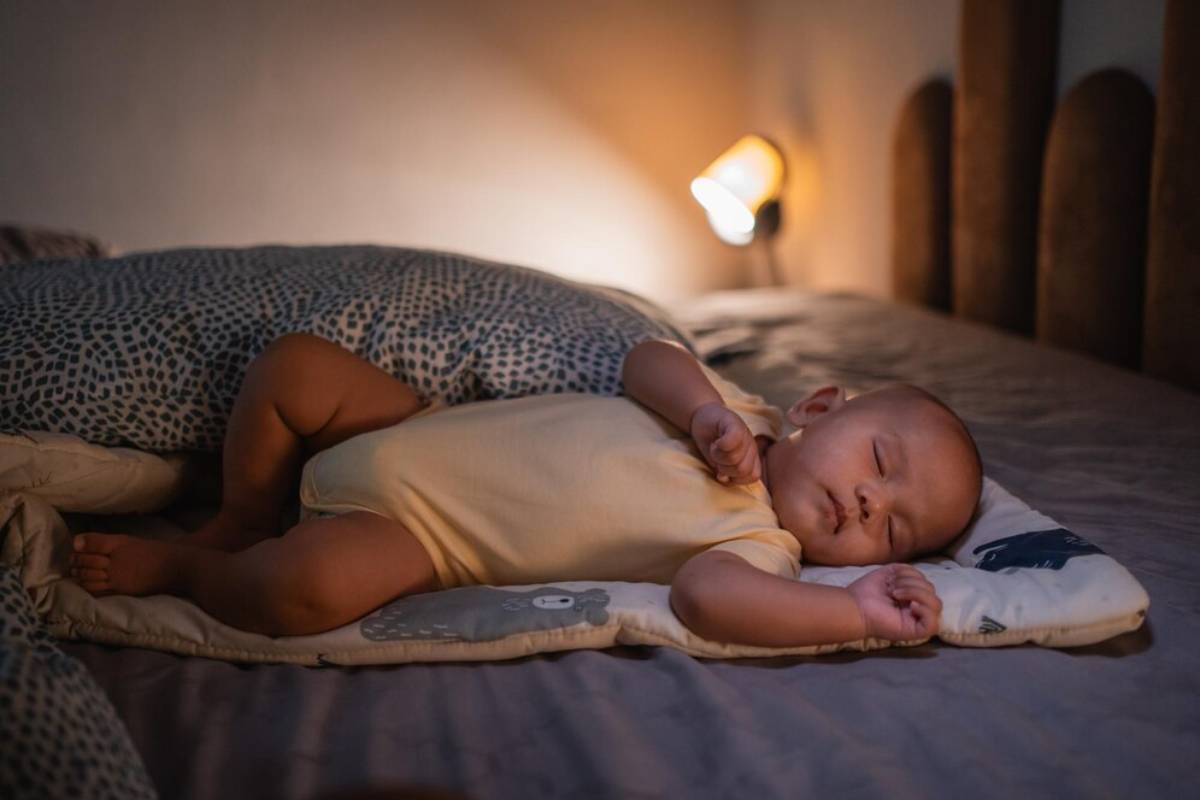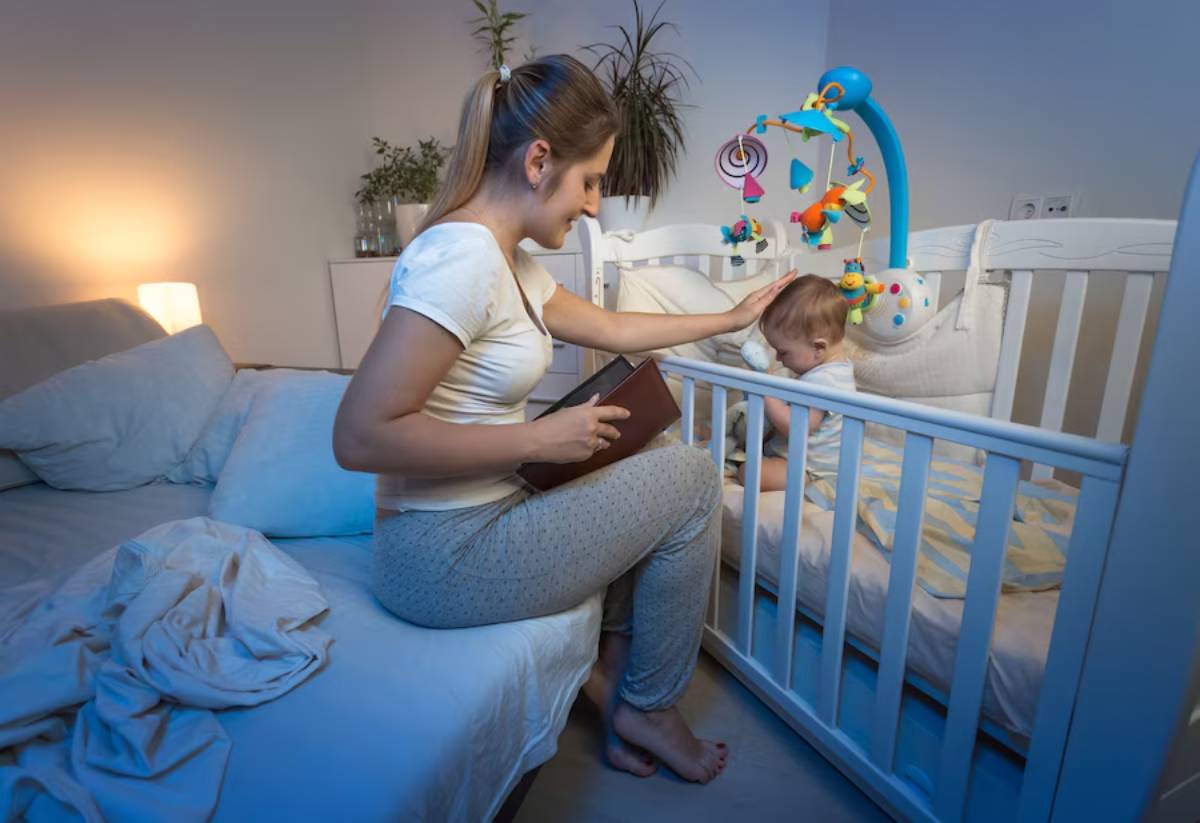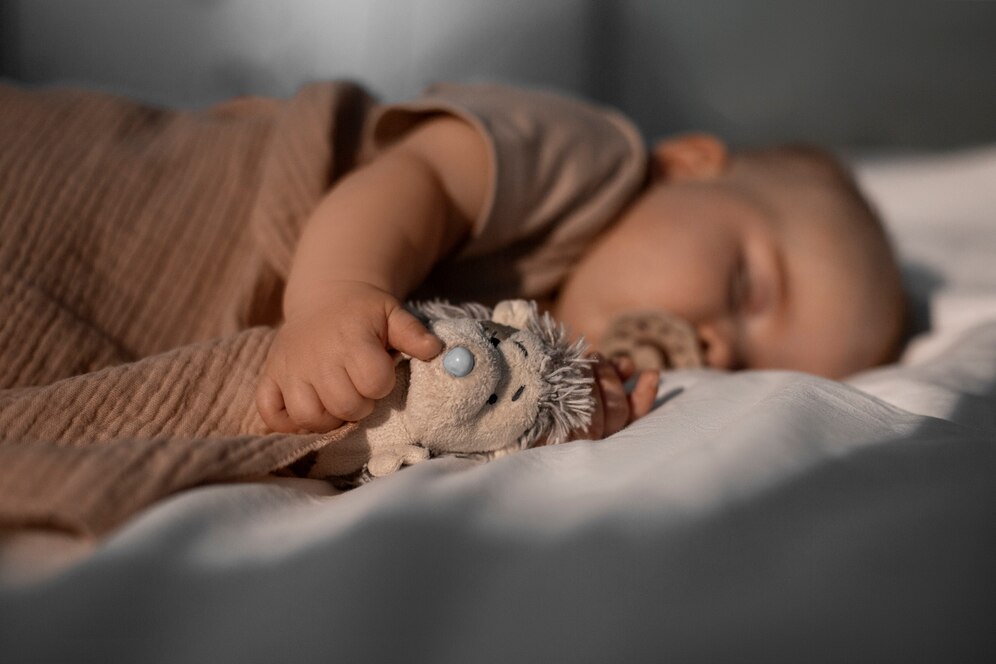
Sleep Environment Tips for Better Baby Rest
Making the best sleep space for your baby is key. It helps their health, happiness, and growth. While it may seem that babies can nod off anywhere, their surroundings significantly impact how well and how long they sleep. This guide covers everything you need to know to optimise your baby’s sleep space. It looks at lighting, temperature, safety, and daily routines.
We’ll share helpful tips for newborn sleep. We’ll also clear up common myths and stress crib safety. Plus, we’ll give advanced recommendations based on research and real-life experiences. Whether you’re a new parent or want to improve your baby’s sleep setup, these tips can help. They will create a calm and safe space for your little one to rest well.
Setting the Scene: Why the Right Sleep Environment Matters
Sleep is more than just a necessity for babies. It is a cornerstone of their development. During sleep, their bodies grow, brains mature, and memories consolidate. Many parents find it hard to create a sleep environment that encourages good, steady sleep. Some focus on sleep training techniques but ignore the baby’s sleep environment. This is a big mistake.
In this guide, we will explain what a baby’s sleep environment is. Then, we will show you how to create one that is safe and calm.

The Importance of a Proper Sleep Environment
A well-crafted sleep environment doesn’t just make bedtime easier. It establishes healthy sleep associations that will benefit your child for years to come. Babies, especially newborns, thrive on consistency. A calm and secure sleep area helps keep their body clock in check. It lowers night awakenings and improves naps.
Parents are often told that their babies will “sleep anywhere,” but this advice can be misleading. Some newborns might nap in a car seat or pram. However, they get better sleep in a space made for it.
Debunking Common Misconceptions
There are several myths that often hinder parents from making the best decisions for their baby’s sleep:
- Myth 1: Babies can sleep through anything. In reality, babies are highly sensitive to noise, light, and temperature fluctuations. While some may sleep through moderate sounds, others will wake at the slightest disruption.
- Myth 2: Crib safety only means avoiding falls. Crib safety encompasses much more. It covers mattress firmness, proper bedding, crib slat spacing, and removing suffocation risks. All these steps help lower the chance of Sudden Infant Death Syndrome (SIDS).

Key Benefits of a Well-Designed Baby Sleep Environment
Why It Matters
Your baby will spend more time asleep in their early months than awake. Thus, their sleep environment becomes one of the most influential aspects of their daily life. A thoughtful setup and sleeping methods bring a multitude of advantages:
1. Promotes Healthy Sleep Patterns
Babies’ circadian rhythms – their natural sleep-wake cycles – begin to form at around six weeks old. By then, a consistent and calming environment can begin to shape positive sleep habits. The right ambience teaches your baby when it’s time to sleep and when it’s time to wake, helping to reduce fussiness and promote longer stretches of rest.
2. Enhances Safety
A safe sleep space reduces the risk of sleep-related accidents and SIDS.
Crib safety is not just about putting your baby in the cot. You need to follow some key guidelines:
- Use a firm, flat mattress.
- Remove soft items from the sleep area.
- Ensure the crib meets current safety standards.
3. Reduces Sleep Disturbances
Light pollution, unpredictable noise, and uncomfortable temperatures are common culprits behind night waking. Improving these environmental factors helps create a calm space for your baby. This reduces sudden wake-ups and makes it easier for them to fall back asleep when they stir.
4. Supports Emotional Wellbeing
Consistent routines and familiar surroundings offer a sense of security. When your baby knows what to expect at bedtime, they feel calmer and more relaxed. Over time, this helps lower anxiety and boosts emotional strength in both infancy and childhood.
Real-Life Applications
Many parents notice big changes in their baby’s sleep just by changing the environment. For instance:
- A family added blackout curtains. They noticed their baby woke up much later.
- Another family discovered that a white noise machine helped block out the sounds of street traffic, leading to longer nap times.
- A couple noticed their nursery was too warm using a room thermometer. After they set it to a cooler temperature, their baby slept better at night.
These are small changes, but they yield significant results.
Additional Expert Tips & Common Mistakes to Avoid
Best Practices for Creating the Ideal Baby Sleep Environment
Whether you’re starting from scratch or tweaking an existing setup, these practices can make a world of difference:
1. Control the Lighting
Natural light helps regulate a baby’s circadian rhythm. During the day, let plenty of daylight into your baby’s space. For nap times and especially bedtime, use blackout blinds or curtains to signal that it’s time for sleep. Dim lights during the evening wind-down routine can also cue the body for rest.
2. Maintain a Comfortable Temperature
The best nursery temperature is 16°C to 20°C. Overheating can raise the risk of SIDS. So, avoid overdressing your baby and skip heavy blankets. A breathable sleep sack is often a safer and more practical alternative to loose bedding.
3. Minimise Noise
A quiet room is ideal, but life can be noisy. White noise machines help by masking household sounds or outside disturbances. Some babies find rhythmic sounds soothing. This includes heartbeat simulations and gentle lullabies.
4. Ensure Crib Safety
Use a firm, flat mattress with a tightly fitted sheet. Avoid cot bumpers, duvets, pillows, and stuffed animals. Regularly inspect the cot for any loose or broken parts. If using a second-hand crib, ensure it complies with current UK safety regulations.
Common Mistakes to Avoid
1. Overloading the Crib
A visually cosy cot may seem appealing, but less is more when it comes to safe sleep. Soft toys, comforters, and decorative pillows are all potential suffocation hazards and should be kept out of the sleep area.
2. Inconsistent Room Temperature
It’s easy to forget about temperature, especially at night, but even small shifts can impact your baby’s comfort. Use a baby room thermometer and monitor the weather to keep the nursery within the ideal range. Dressing your baby in layers that can be added or removed easily is also a smart strategy.
3. Frequent Changes to Routine
A predictable sleep routine helps your baby understand what to expect. Regularly changing bedtime or sleep cues can cause confusion and make it harder for them to relax. Try to keep routines consistent, even on weekends or when travelling.
Advanced Insights and Expert Recommendations
Additional Layers of Complexity
If you follow the basics and want to improve more, try these advanced strategies:
1. Incorporate Aromatherapy
Mild essential oils such as lavender or chamomile can help promote calmness. Always use oils made specifically for babies and opt for diffusers placed safely out of reach. It’s best to consult your paediatrician before introducing any new scents into the nursery.
2. Utilise Smart Technology
Modern tools like smart monitors, humidity sensors, and sleep trackers can help you understand your baby’s sleep patterns. Some monitors track room conditions in real-time and send alerts to your phone if adjustments are needed.
3. Personalise the Space
Babies, like adults, have individual preferences. Some may sleep better in cooler environments, while others need a more cushioned sleep sack. Trial and observation are key. Pay attention to how your baby responds to different variables and adjust accordingly.
Unique Industry Perspectives
Sleep consultants often stress the importance of adaptability. While guidelines provide a great starting point, the best approach is one tailored to your child’s unique needs. Some babies need gentle rocking to soothe them before bed. Others do better with quiet time in the cot before sleep. Trust your instincts and observe what works best for your baby.
Health professionals also remind parents that sleep challenges are completely normal during infancy. Teething, growth spurts, and developmental milestones can disrupt sleep. However, keeping a consistent environment can help ease these changes.
Conclusion: Creating a Restful Routine That Grows with Your Baby
Creating the perfect sleep environment for your baby is both a science and an art. By focusing on comfort, safety, and consistency, you set the stage for your child to develop strong, healthy sleep habits that can last a lifetime. The journey may feel tough sometimes, but small changes can lead to big improvements.
Be patient, trust your instincts, and remember: every baby is different. What matters most is being responsive to their cues and creating a sleep space where they feel safe and secure.
Don’t hesitate to reach out to other parents or professionals for support. Parenting communities, both online and in-person, provide helpful insights and shared stories about bedtime routines. By learning together, we can ensure that every baby has the chance to enjoy peaceful, restorative sleep.